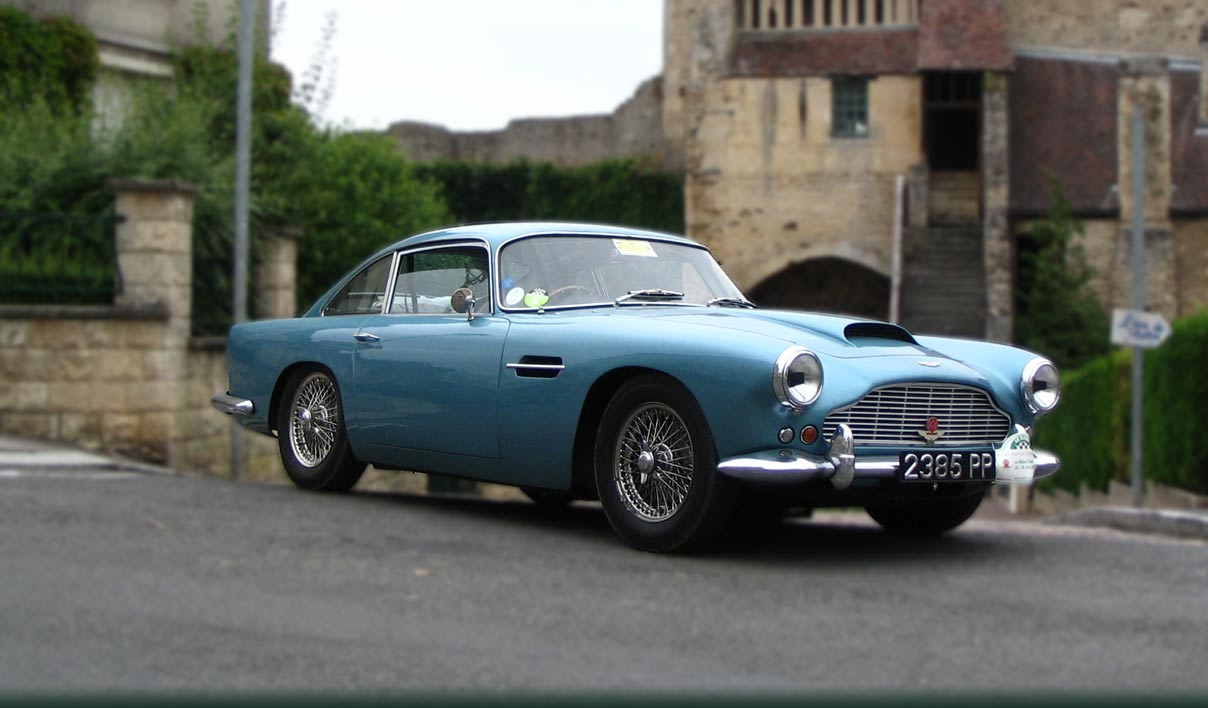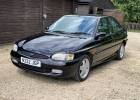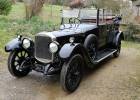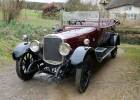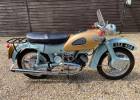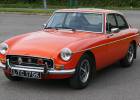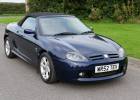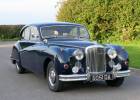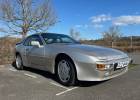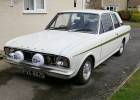Subject of a meticulous restoration with upgrades
1957 Austin-Healey 100/6 Modified
Make: Austin-Healey
Model: 100/6 Modified
Year: 1957
Registration Number: 746 YUF
Chassis Number: BN4-L-0/35805
Engine Number: IC/35805
Transmission: Manual with Overdrive
Steering: Right Hand Drive
MOT Test Expiry: Exempt / 6 June 2020
Sold For: £52250
Road Tax Exempt
Modifications from Standard:
Date of Build: 27th February 1957. The car has been tastefully modified to retain the essential character of this early Longbridge produced car whilst improving the performance and reliability of the car.
Engine modifications
29D Healey 3000 (BT7) engine has been rebuilt to higher than BJ8 specification by Slark Race Engineering
Compression ratio lowered to 9.0:1, hardened valve seats and bronze valve guides fitted to allow the use of unleaded fuel without additives. Head ported and gas flowed throughout.
Mildly ported inlet manifold matched to HD8 SU carburettors rebuilt by Burlen Fuel Systems. The Carbs are modified to incorporate a choke linkage (with rose joints) to facilitate a single choke cable operating both jets. K&N air filters are fitted. Throttle linkage replaced by cable.
DWR1 Denis Welch fast road cam fitted giving 268 degrees of duration (24, 64, 59, 29)
Denis Welch 6-branch tubular exhaust manifold with 2” exhaust system to the rear exit. The branch manifold is fitted with threaded bosses to accept Lambda O2 sensors and is then Zircotec coated to reduce under bonnet temperatures. The silencer is fitted with a Nimbus GII aluminium heat shield.
Flywheel lightened and drilled to accept a diaphragm (BJ8) clutch pressure plate. All crankshaft rotating parts fully balanced as an assembly. Connecting rods and pistons balanced and matched.
Alloy rocker box cover from Wolseley 6/110 (as fitted to Works cars) fitted. It is modified with a Monza miniature oil filler cap. ‘O’ ring groove milled into the gasket face to accept 6mm rubber ‘O’ ring instead of cork gasket.
Distributor rebuilt at the Distributor Doctor and advance curve characteristics adjusted to suit the revised camshaft and compression ratio characteristics.
Denis Welch High Capacity rotor type oil pump fitted and spin-on oil filter kit.
Alloy finned sump.
Crankshaft rear oil seal conversion.
Engine Bay - General
55Amp Alternator conversion.
Earthing straps bridging the engine mounts from crankcase to engine mount towers on both sides to minimise voltage drop.
Individual alloy pot reservoirs are fitted feeding the Brake and Clutch master cylinders using stainless braided feed lines.
The standard radiator is uprated with a modern high performance core for improved cooling capacity. Correct sleeved thermostat (86deg.C) fitted to give correct circulation when hot.
The engine bay firewall is covered in engine-turned stainless steel sheet for improved appearance and to cover all redundant holes and captive nuts without damage to the original shell. (See Electrical)
A full-flow Malpassi glass bowl fuel filter/regulator is installed. The regulator element has been removed to allow full flow. The electronic SU pump can be relied on to deliver the correct flow and pressure for carburettors.
Nimbus GII aluminium heat shielding is used to protect the cockpit from engine bay heat, and is also applied to both sides of the carburettor heat shield to reduce heat soak from the exhaust manifold.
Steering and Front Suspension
Uprated anti-roll bar and links fitted with polyurethane bushes.
Needle roller thrust (Torrington) bearings to the kingpin trunnions which lighten the steering considerably.
Sliding top mounts for Camber adjustment. Set to provide 1 degree negative camber.
Denis Welch constant clearance worm fitted to the steering box.
Rear Suspension
The rear springs are new replacements. They were completely stripped and rebuilt. The tips of the leaves are radiused and chamfered with Teflon interleaving inserted and an extra leaf added. This provides a very supple suspension movement removing the ‘stiction’ often experienced with leaf springs.
Standard Armstrong lever shock absorbers are fitted. The mounting holes have been accurately resized/reamed to accept the special dowel bolts used for mounting. The bolt heads have custom flanges to increase the clamping area and prevent rotation. This allows single handed tightening.
The panhard rod is fitted with polyurethane bushes.
Wheels & Tyres
15 x 5” Chrome 72 spoke wheels fitted with 180HR15 Michelin XAS tyres. These taller profile tyres give the same rolling diameter as the Dunlop RoadSpeeed tyres that were originally fitted. This maintains the appearance of the wheel within the wheel arch, as Gerry Coker intended, without giving excessive width to the tyre which can cause fouling on the inner rear wings or front splash guards when on full lock.
Brakes
BT7 disc brakes fitted with M16 (2”) calipers. The increased line pressure required for the disc brakes would result in bias to the rear if the standard cylinders are retained. The rear brake slave cylinders were therefore replaced with ¾ inch to correct the brake balance as in the BT7/BJ8 specification.
Cunifer brake line tubing used throughout to avoid the known issues with copper tube fatigue failures. Goodridge Stainless braided flexible brake lines fitted.
Brake line to the rear is routed through the cockpit (not the alongside chassis rails) for protection.
The handbrake pawl has been recreated to reverse the locking function thereby converting to ‘fly-off’ operation.
Pedal Box
The brake and clutch pedals have been modified to accept rose joints, bolted in double shear, in place of the standard steel clevis and pin. This removes the unavoidable lost motion from the standard set up. A physical stop has been created to set the upper limit of the return of the pedals. All Big Healeys have a driving position that requires a long reach to the pedals forcing and a very close steering wheel. The pedal upper stop brings the pedals closer allowing the seat to be moved rearward easing the cramped steering relationship. The upper stop removes the dependency on the master cylinder circlip as the limit stop. Threaded pushrods allow the pedal slack, or free play to be minimised giving a very immediate response to pedal inputs.
A pedal actuated proximity switch is used for the brake lights omitting the hydraulic switch normally used and known for being insensitive and late to operate.
Clutch
Stainless Steel hydraulic flexible line fitted for longevity.
Diaphragm pressure plate and 9½” friction plate as fitted to MkIII BJ8
Gearbox
The original BN4 gearbox with 28% overdrive is retained which has been fully rebuilt at Hardy Engineering (Leatherhead).
A gearbox retaining strut would normally hold the rear of the overdrive back to the gearbox cross member to prevent the engine/gearbox assembly from moving forward under braking. Experience has shown that this tension tends to open the flange seals of the overdrive casing resulting in oil leaks. To avoid this possibility compression struts have been installed between the engine backplate and the front engine mount towers to control engine movement.
Transmission
The original rebuilt propeller shaft mates the gearbox with the original back axle. The axle has been fully rebuilt with new bearings and a replacement crown wheel and pinion set from Mike Lempert is installed giving the coveted 3.54:1 ratio (11:39). The rear oil seal journals at the hubs have been fitted with ‘Speedi-Sleeve’ journal recovery and are completely oil-tight.
Fuel System
Solid State electronic SU fuel pump fitted.
Copper fuel lines routed through the cockpit (rather than along the chassis rails). Float chamber lids are exchanged, front with rear, to allow a combined banjo fitting to be created eliminating the flexi-pipe link and pipe clips normally used. This also has the benefit of giving improved access to the K&N filter mounting bolts.
The carbs are mounted to the inlet manifold using ARP 12-point aero nuts. These use a 3/8” AF ring spanner rather than the customary ½” AF spanner needed for the standard nuts. Space is quite restricted on the carb bodies and this improves access and maintenance convenience.
Fuel tank is vented from the left front corner to the filler tube to avoid pressure blow off of fuel in warm weather when the tank is close to full. The filler is a Monza quick release cap and the mounting has been fully integrated into the rear shroud.
Electrical
All wiring is custom built to modern standards using current materials. It is discretely routed and contained under the scuttle rather than on the engine bay firewall.
The rear harness from the boot supports an additional switch-activated courtesy light for the load area. The harness routes through the cockpit of the car along the inner face of the left hand sill.
The Battery (negative earth) is carried in the normal tray location and is connected to earth through an FIA approved isolator switch on a custom mounting panel. The panel also carries a DIN power outlet with in-line 15amp fuse.
The main Red battery cable is 35mm2 (451/0.3 strand) highly flexible copper welding cable to minimise voltage drop to the starter motor. It is routed along the inner face of the right hand sill. It connects to the solenoid which is mounted on the air plenum box to the right of the steering column inside the cockpit. This location was chosen for ease of access and discrete connection into the wiring looms. From there further red welding cable is routed to the starter motor.
Courtesy lights to the footwells, using MGB number plate lights, are fitted to the air plenum box and activated by door earth switches on the ‘A’ posts which are contacted by the arms of the door holding friction straps.
The Power Centre comprises relays and fuses for all major circuits removing electrical load from switches. A main power relay is activated by the ignition switch with further relays for overdrive, indicators, horns, main beam, dipped beam and long range lights.
15 fuses are fitted. 5 are permanently live and 10 are switched through the power relay.
The Power Centre is mounted to a hinged panel which is concealed in the footwell cavity that would accommodate the pedal assembly on a LHD car.
Rear indicators are built into the standard rear reflector units to avoid the three-function use of the brake/sidelights. Front sidelights are fitted into the P700 ‘Tripod’ headlamp reflectors leaving the separate front sidelights to function as indicators only. An audible beeper is wired to the indicator warning light as the selector switch occasionally fails to self-cancel. They all do that.
Bodywork General
All original panels have been retained and repaired. The chassis and body fitting was carried out by Kevin Law’s team at Orchard Restorations, who did an excellent job. The car is finished in BMW ‘AtlantisBlau’ (Atlantic Blue) Code 207. The shell was then fully assembled by Kevin with the exception of the front wings which were loosely mounted for delivery.
Sound deadening and adhesive pads are fitted to doors and inside the front wings to reduce panel resonance. This gives a very solid feel to the build of the car. All the usual moisture traps have been cleaned and coated annually with Dinitrol.
Bodywork – Styling
Minor modifications to the styling were carried out for aesthetics or improved practicality.
The cockpit styling has been modified to resemble that of the earlier Austin Healey 100. The dash panel is finished in body colour paint with a silver binnacle area rather than vinyl covering. The paint line where the silver joins the blue uses the standard 100/6 embellisher chrome ring to mask the join line.
The top of the scuttle is exposed body colour with colour matched demister masks. The padded top covering is not fitted. An alloy front trim rail is fitted to continue the line of the cockpit rails along the doors and around the rear shroud as in the AH100.
A modern Cape International heater is fitted obviating the requirement for a slider control. Unusually for a Healey, the cockpit insulation is now so good that in cooler weather the heater is a valuable contribution and delivers well. The standard Bakelite central switch console has been replaced with a chrome plated steel version that carries independent fresh air controls to each of the footwells, heater switch, long range light switch and the choke control.
A gas strut is fitted to the boot lid removing the requirement for a prop rod or safety cable. Similarly a matched pair of gas struts are fitted to the bonnet. This removes the need for a bonnet stay rod and avoids the difficult process of stowing the rod with one hand when closing the bonnet.
The standard wire spoke ‘banjo’ steering wheel has been converted and rebuilt with a Nardi style wood rim at 15” diameter by Mike Lempert in the USA, who also supplied the matching gear knob. The equal spacing of the spokes, as Gerry Coker intended, with the vertical spoke between the instruments, is a key feature of these cars, and a wood rim wheel is a period correct upgrade that suits their sporting character.
Weather Equipment
For economy of production costs the original tonneau covers for these cars were based on the standard fabric width of 54”. This practice continues today in the replicas that are available from the usual suppliers. The limited fabric width results in the covers barely reaching over the top of the doors when fitted and closed. The tonneau on 746 YUF is custom made, in matching silver grey, with additional 3” wings on each side to overcome this issue. It prevents rain water from rolling off the cover into the cockpit.
Original Longbridge BN4 side curtains have been located and restored to the original specification. These are a multi-piece design and not many sets were made before they were considerably simplified for the BT7 cars.
Similarly the Longbridge BN4 hood is unique in its design having a rear section that slopes forward more than the taller, later hoods. That shape and hood frame has been retained on this car as it is one of the significant features of the early sixes. The hood frame however is usually held captive at the feet by sliding mounts. It is a neat idea but difficult to use when deploying as well as being awkward when stowing away. It all too easy to scrape paint and scratch the cockpit rails when fighting with it. The frame has been modified to a socket mounting similar to the BT7 Roadsters which allows for much easier deployment and stowage.
The rear backrest, behind which the hood and frame are stowed, is often a poor fit. The shape of the curve and the angle between the top shelf and the backrest frame are critical elements. Getting the fit correct is a complex trial and error process that is often overlooked as every car is marginally different. The vendor spent a great deal of effort getting this fit exactly right as, once the eye is aware of the issue, getting it wrong is all too common and disappointing. This feature however is completely hidden when the tonneau is fitted.
Interior Trim
Leather and Vinyl in Silver Grey with blue piping were chosen for the interior trim which was carried out by Ahead4Healey’s. The interior has been refurbished as closely to the original early BN4 standards as possible, maintaining many of the features which only applied to the earliest 6-cylinder cars. Research with marque experts in the UK and USA identified the correct shaping and construction of the rear three-quarter panels which are unique to the Longbridge model. Also the central wrap over armrest with the distinctive front ‘S’ curve was not previously available as the dimensions and shape had not been properly captured. The patterns are available to AH4H for future supply of these pieces.
Tuning
Tuning of SU carburettors are restricted to the adjustment of the fuel/air mixture at idle and balancing the throttles to ensure even load across all cylinders. This is sufficient with a standard engine and known spring and needle requirements.
With the non-standard state of tune of the engine in this car, obtaining the correct fuel/air mixture at all throttle positions would necessitate either a lot of rolling road diagnostics or a lot of trial and error with needle profiles.
An Innovate Wideband Lambda kit is fitted, that allows mixture data to be logged to a laptop whilst also displaying the mixture strength on a 2” gauge. The gauge can be disconnected and the sensor will continue to operate normally.
Using this equipment the vendor has been able to select/adjust needles that give a good mixture at idle but with slight richness throughout the rev range. It is a safe condition that ensures there is no weakness of mixture at ‘Wide open throttle’ which could unknowingly cause damage to piston crowns. The car returns a consistent 22mpg which could possibly be improved slightly if the needles were more closely adjusted in mid-range to a more lean position.
